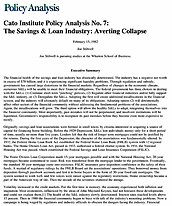Originally, savings and loan associations were formed in small towns by citizens interested in acquiring a source of capital for financing home building. Before the 1929 Depression, S&Ls lent individuals money only for a short period of time, usually no more than five years. Lenders felt that the risk of longer term mortgages could not be justified by the returns. During the first years of the Depression, the character of the associations was fundamentally-altered. In 1932, the Federal Home Loan Bank Act established the Federal Home Loan Bank (FHLB) system with 12 regional banks. The Home Owners Loan Act, passed in 1933, authorized a federal charter system. In 1934, the National Housing Act was passed, which established the Federal Savings and Loan Insurance Corporation (FSLIC).
The Home Owners Loan Corporation made 15-year mortgages possible and with the National Housing Act, 20-year mortgages became economical to issue. Risk was transferred from the mortgage lender to the government. Eventually, the standard 30-year mortgage came into existence. FSLIC insurance gave depositors confidence in the safety of their funds. A myriad of regulatory rulings by the FHLB Board set the associations’ operations: They borrowed money from depositors through passbook accounts and lent it to home buyers in the form of 30-year fixed rate mortgages. The system seemed to work well, and few voices were raised against the regulatory restrictions. Home ownership became a part of the American way of life. Then the decade of the seventies shattered the mirage.
Volatility increased in the credit markets. For the first time in memory, the economy experienced both inflation and stagnation. Most economists, influenced by the ideas of John Maynard Keynes, had not foreseen these developments and could not explain them.[1] The health of the S&L industry slowly deteriorated. Interest rates reached levels above 15 percent. Then in 1980 the financial community began to buzz with talk of the industry’s mounting problems. Now a campaign is being waged by regulators and industry officials to obscure the dangers facing the industry. Financial publications claim that “the FSLIC has more than adequate resources to prevent any loss to depositors,” that “when interest rates fall to more ‘reasonable’ levels, the industry will return to profitability,” and “(the industry’s) strong net worth position … shows its capacity to absorb considerable periods of adverse economic conditions” (from the U.S. League of Savings Associations’ 1981 Sourcebook). None of these contentions is true.

